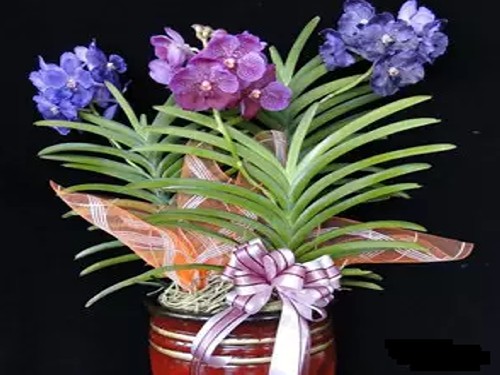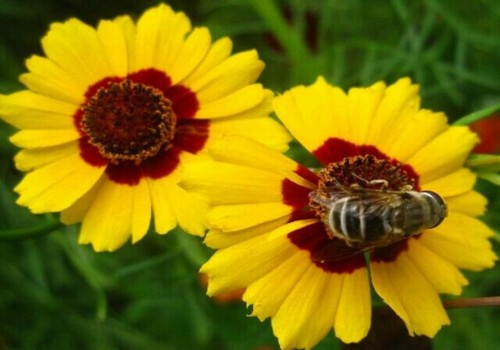Culture methods and matters needing attention of night incense
Evening incense, we must be no stranger to this kind of flower, flower friends who like to listen to songs will know which song is directly named after this kind of flower. Nocturnal flowers are small, but their fragrance is very strong, so they are generally planted in the courtyard for viewing, and the breeding of nocturnal incense is relatively simple, as can be seen from the above breeding methods. It's nice to plant it in a moderately ventilated place in the courtyard.
The requirement of soil quality is not strict, clayey loam is suitable; it is sensitive to soil moisture and likes fertile, moist but non-stagnant soil. In times of drought, the leaves curl up and the buds wrinkle, making it difficult to open. The following is to introduce the breeding methods and matters needing attention of night incense.
[soil]
Night incense like loose, well-drained, organic-rich acid soil. The bed soil prepared with peat soil and rotten leaf soil is 3 ∶ 3 ∶ 4 respectively. The bed soil prepared in this way has the characteristics of increasing bed temperature, water retention, aeration, fertility and partial acidity, and is suitable for branches to take root and sprout. The pot soil is generally made of peat soil or rotten leaf soil with 3 parts of coarse river mud and 2 parts of coarse river mud and a small amount of farm manure. When potted, the bottom is about 1 to 5 deeply filled with broken bricks in shape to facilitate basin drainage, and the upper part is cultivated with mixed basin soil.
[light]
Potted night incense requires well-ventilated environmental conditions. From the beginning of May to the end of September, it is appropriate to put sufficient sunshine in the hospital or maintenance on the balcony. Although it likes adequate sunshine, it should avoid hot sun exposure at noon in summer.
[temperature]
It should be moved into the greenhouse in the middle and last ten days of October every year, and the temperature of the greenhouse should be kept at 8 ℃-12 ℃. If the temperature is lower than 5 ℃, the leaves will wither and fall off until death.
[watering]
Its summer is the peak growing season, in addition to the application of sufficient fertilizer, the basin soil must be kept moist and watered twice a day. If you are a seedling, you should spray water on the leaves 1-2 times a day.
[fertilization]
In the process of its growth, liquid fertilizer should be applied every 10 to 15 days, and thin liquid fertilizer should be applied every half a month since late April, so that it can blossom continuously from the middle of May. If high efficiency humic acid liquid fertilizer such as Chunquan 883 or Huimanfeng can be applied, the effect is better.
[change basin]
The basin change should be carried out before coming out of the room in early April. When changing the basin, part of the old soil and roots should be removed, replaced with new culture soil, and re-cut to promote the development of new branches. After changing the basin, you should keep the soil moist, but there can be no stagnant water in the basin. If you find that the tender leaves droop slightly after changing the basin, you should water them in time.
[pruning]
The branches of night incense grow faster, and if they are allowed to grow naturally, they can grow about 1 meter in a year, so they need to be pruned every year in order to sprout more lateral branches and blossom. Pruning is generally carried out in autumn, and each side branch remains 10-12 cm long. After the flowers fade, the withered branches and overdense branches should be cut off.
[plastic surgery]
Scaffolding should be set up in cultivation and management, plants should be topped in time to promote more branches, residual pedicels should be cut off in time after blooming, fertilizer should be added, withered branches and overdense branches should be cut off after blooming, and overgrown branches should be truncated.
[disease]
Coal pollution disease and ring disease often occur, which can be sprayed with 50% methyl topiramate wettable powder 500 times.
Note:
Nocturnal should not be placed indoors, because its aroma will make patients with high blood pressure and heart disease feel dizzy, depressed and uncomfortable, causing chest tightness and breathing difficulties, so nocturnal incense is not suitable for indoor display. It is best to put it outside as an ornamental plant.
Green plants generally carry out photosynthesis during the day and only respiration rather than photosynthesis at night. At night, it will consume indoor oxygen and compete with people. And night fragrant flowers or oxygen-consuming flowers, even in the daytime photosynthesis will consume a lot of oxygen, affecting human health, in the night when photosynthesis stops, will emit a large amount of exhaust gas.
In addition, at night, the fragrance of fragrant flowers will be stronger, because night incense can emit a large number of particles that strongly stimulate the sense of smell at night. Therefore, it will make patients with high blood pressure and heart disease easy to feel dizzy, depressed and uncomfortable, and even aggravate the condition. Therefore, it is not suitable to plant night flowers in the rooms of patients with high blood pressure and heart disease.
Time: 2019-06-01 Click:
- Prev

Culture methods and maintenance points of Wandai orchid
The Wandai orchid in spring is about to enter the vigorous growth period, which is a good time to change the basin. Wandai orchid, which has been growing for many years, its root system will be tightly attached to the inner wall of the pot, so if it is planted in a pottery basin, it is best to break the basin and change the pot, so as not to damage the root system when taking out the plant.
- Next

Maintenance and management: how to keep the golden rooster chrysanthemum in bloom
This kind of flower is very common. At this time of year, if you take a look at the roadside casually, you may be able to see her beautiful shadow, blooming brilliantly golden in clumps. Oh, it's you again! Although we meet everywhere, many people can't call her name. She is the golden chicken chrysanthemum. As a perennial perennial herb of the genus Chrysanthemum of Compositae
Related
- Fuxing push coffee new agricultural production and marketing class: lack of small-scale processing plants
- Jujube rice field leisure farm deep ploughing Yilan for five years to create a space for organic food and play
- Nongyu Farm-A trial of organic papaya for brave women with advanced technology
- Four points for attention in the prevention and control of diseases and insect pests of edible fungi
- How to add nutrient solution to Edible Fungi
- Is there any good way to control edible fungus mites?
- Open Inoculation Technology of Edible Fungi
- Is there any clever way to use fertilizer for edible fungus in winter?
- What agents are used to kill the pathogens of edible fungi in the mushroom shed?
- Rapid drying of Edible Fungi

